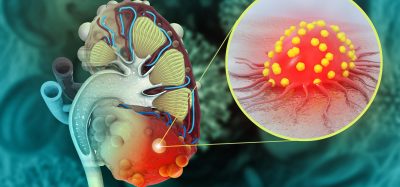Study uses brain cells in a dish to understand polygenic origins of schizophrenia
Posted: 18 October 2018 | Drug Target Review | No comments yet
Using a unique in vitro method, scientists in California have made inroads into understanding the mechanics of the polygenic origins of schizophrenia…

A recent study has established a new analytical method for investigating the complex genetic origins of mental illnesses using brain cells that are grown in a dish from human embryonic stem cells. The polygenic factors associated with psychiatric diseases are little understood, but this new approach offers an avenue for future study.
Researchers at the University of California Los Angeles examined the process in which new neurons are designated for certain roles, and found that changes in gene expression over the course of neural development were significantly associated with genetic risk for schizophrenia.
Commenting on what they gleaned from their study, first author and PhD candidate Anil Ori, Msc, said: “Our approach allowed us to model how multiple regions in the genome that increase risk for psychiatric disorders act in concert to affect molecular and cellular function that is relevant for neurodevelopment.
This is exciting as it provides a novel framework to study genetic risk of psychiatric disease and shows that we can capture parts of the heritability of schizophrenia in a lab model system.”
Studying the disease biology and heritability of schizophrenia in model systems is challenging due to the genetic complexity of psychiatric illnesses. “[Large-scale population studies] have shown that psychiatric disorders are heritable traits in which hundreds if not thousands of genes throughout the human genome contribute to disease risk,” said senior author Roel Ophoff, PhD. This accumulation of many small gene effects is referred to as polygenic risk.
The new approach embraced the polygenic nature of schizophrenia by tracking changes in gene expression as human neural stem cells developed. By integrating the gene expression profiles with genome-wide schizophrenia risk data, Ori and colleagues found that the differentially expressed genes during development were associated with schizophrenia polygenic risk. They replicated this finding in the study using a different sample.
According to the authors, the findings will help researchers narrow down the core disease processes that contribute to disease risk. In the study, the genes primarily responsible for the association with disease risk were involved in synaptic function – the means by which cells communicate and transmit signals through the brain.
“Establishing this platform for further study has great potential benefit,” said Mr Ori. Now that the study has established in vitro neural development as a model for psychiatric disease, researchers can tweak the model to investigate how different environments might affect disease risk, and use this to understand the biology of mental illnesses.
“As large-scale genetic studies of psychiatric disorders will continue to expand, our study provides a valuable genomic tool to help investigate and understand how risk that is distributed across the genome contributes to the etiology of psychiatric disorders,” said Dr Ophoff.
The study was published in the journal Biological Psychiatry.
Related topics
Genetic Analysis
Related conditions
Schizophrenia
Related organisations
University of California Los Angeles (UCLA)
Related people
Anil Ori Msc, Roel Ophoff PhD






